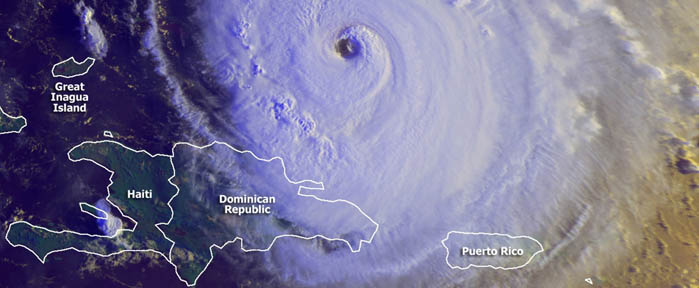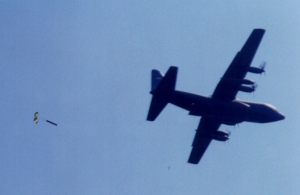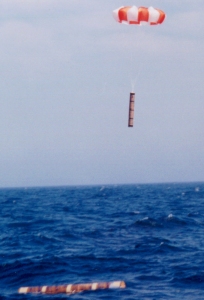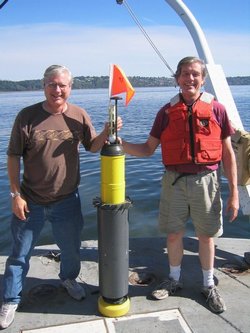|
New York City USA
•
kermit@kermitproject.org
…since
1981
|
| Home | C-Kermit | E-Kermit | Kermit 95 | Scripts | News | About | FAQ |
March 2011:
E-Kermit is now available as Open Source software.

Hurricane Frances, 1 September 2004.
Photo: NOAA, Click image to enlarge
NEW YORK, 20 SEPTEMBER 2004
CHARLEY,
Frances, Ivan, Jeanne...
As the hurricane season of 2004 continues to inflict death and destruction
throughout the Caribbean, scientists are focussing on the role of ocean
currents, temperature, and salinity as they work to improve understanding of
hurricane behavior and develop better prediction models to save lives on
land and at sea.



The EM-APEX float uses Embedded Kermit with an Iridium data modem,
a Motorola model 9522. C-Kermit is used ashore
on a Linux box with several serial ports and modems. The floats phone home,
log in, then give shell commands to start C-Kermit for data transfer.
Mission changes are implemented with a file sent to the float.
The integration and testing of E-Kermit 1.5 into the float's Philips XAG30
microprocessor took me several days.
We switched to Kermit because the Xmodem protocol was not recovering
reliably when bytes were lost. Ocean waves interrupt the signals when they
splash over the Iridium antenna which is only about a foot above the ocean
surface. We are very pleased to say that all data has arrived intact. This
is verified with an end-to-end CRC on each data group which is separate from
the Kermit type-3 CRC used used in the actual transfer. The EK addition is
fantastic for this application.
John leaves Thursday (September 23rd) on a cruise to collect the floats.
Embedded Kermit is ideally suited for applications like this. E-Kermit is the product of more than 20 years' experience with design and real-world implementation of file-transfer protocols that are resilient under harsh conditions, yet can go fast when sailing is smooth. E-Kermit is especially designed for embedding in microcontrollers, where reliable unattended operation in the smallest possible memory footprint is a must. In this application, E-Kermit occupied just 9710 bytes; customer-supplied i/o routines another 4266 bytes, and the customer-supplied control loop 15102 bytes, a total of 29KB.
| The Kermit Project / kermit@kermitproject.org / 20 Sep 2004 - 27 Sep 2011 - 19 March 2013 |